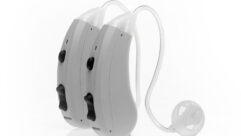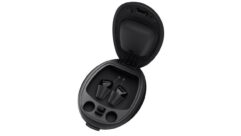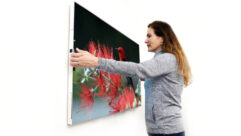Attention to Hearing Safety Needed When Using IEMs
Mar 16, 2006 8:00 AM
As more and more worship venues opt for in-ear personal monitor systems, protecting the musicians’ hearing is becoming more of a concern. It is all too easy, experts say, for IEM users to endanger their most valuable sense, either in a single event or slowly over time.
A few simple precautions should become part of every church performer’s routine, these experts advise.
Some are simple. “Make sure the volume is all the way down before putting the earphone in,” says Doug Gould, senior market developer at Shure.
But some other common practices create unnecessary dangers that may not be as obvious. “For years, we’ve seen performers taking off one, or both, of their ear monitors because they couldn’t hear their full environment,” notes Sensaphonics President and CEO Michael Santucci.
Craig Sibley, marketing product specialist at Aviom who also acts as a worship leader, has observed the same phenomenon. “It’s very common to see people with IEMS pop one out, but that’s a very dangerous thing to do,” he says. “You end up driving higher volumes into the ear that’s still plugged in.”
The answer, Sibley and Santucci say, is to deliver ambient room sound to the IEM through the monitor mix. “[This way] musicians can finally hear everything they want to hear,” Santucci says.
Sibley says a variety of convenient and inexpensive microphones are available that can capture ambient sound, and they should be carefully placed to avoid picking up sound emerging from the sanctuary’s main speakers.
Many IEM and personal monitor mixing systems provide a fail-safe option called a limiter or “brick wall limiter,” which caps the amount of volume that can be thrown against the user’s eardrums. “Don’t use earphones without some kind of brick wall limiter to protect against surges and unexpected events,” says Gould.
Sibley, though, feels a limiter is at best a safety net. “If you’re doing your mix correctly, the levels you’ll be listening at are much lower than what the limiter would be,” he says.
Gould thinks the combination of sound-isolating IEMs and sensible mixing (including ambient sound) is a good strategy to both meet musicians’ needs and protect their ears. Users who opt for headphones may be courting trouble, he says.
“You might need to get more volume into a headphone, just to cut out the ambient noise,” Gould says.
Musicians should also be realistic about how much sound they actually need in their ears,” Gould says.
“You should get by with the minimum amount of earphone mix,” Gould says. “How much do you need in a monitor mix? Does it have to sound like a CD?”
Gould also says using a stereo sound field in the monitor mix can help an individual musician distinguish and “locate” the sounds of his bandmates without having to turn up the volume on any of their feeds.
Finally, IEM experts unanimously counsel frequent ear exams by a professional. Sensaphonics’ IEMs are customized for each user in a process that requires an ear and hearing exam. Similarly, according to Gould, “Shure highly recommends that every musician have a hearing test, as a baseline, though a lot of musicians are just afraid to have their ears looked at.”










